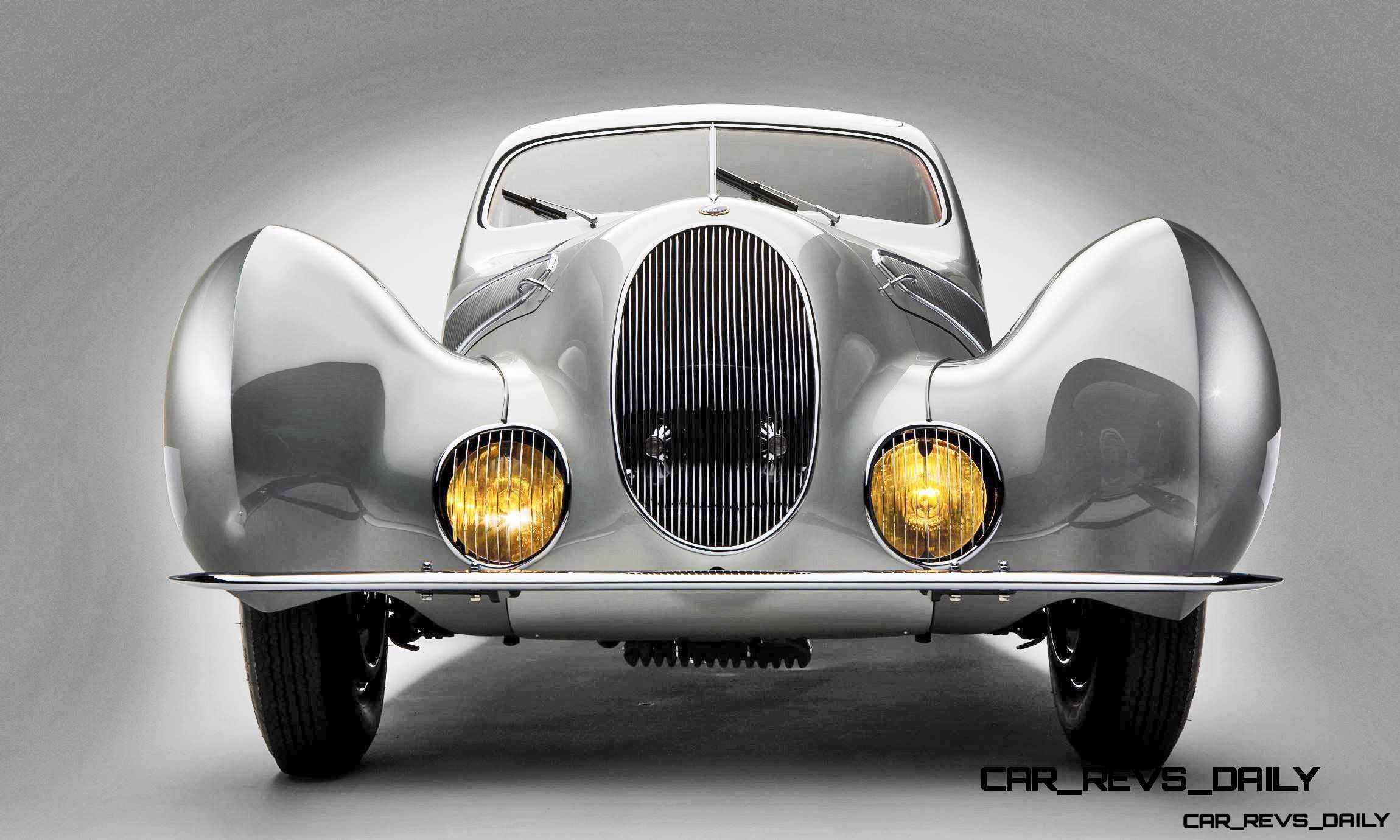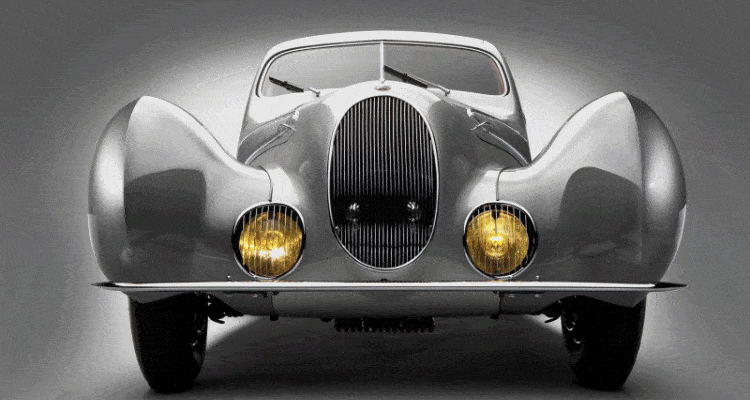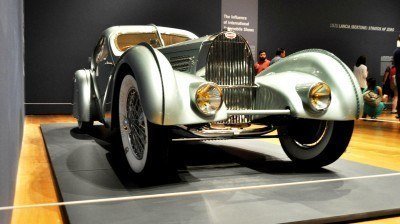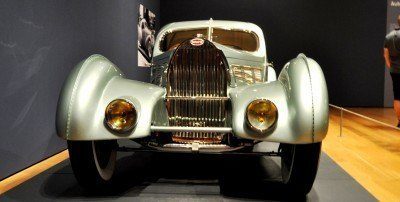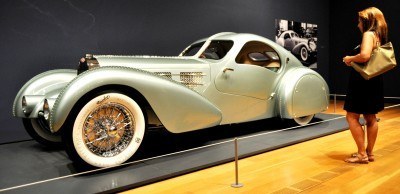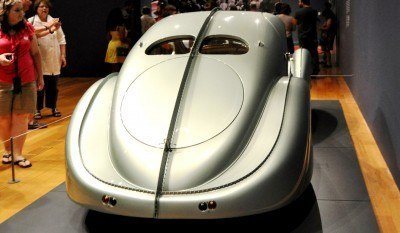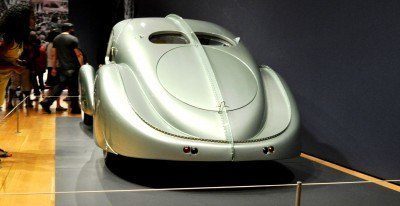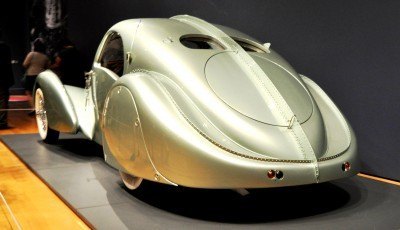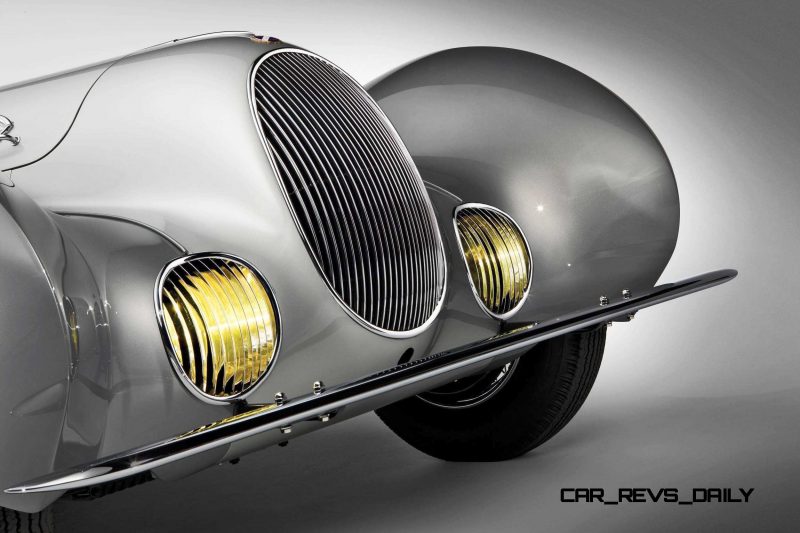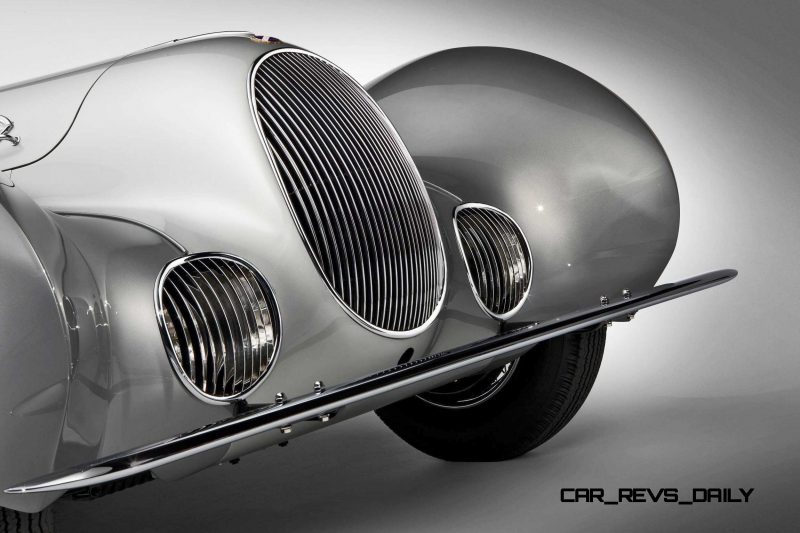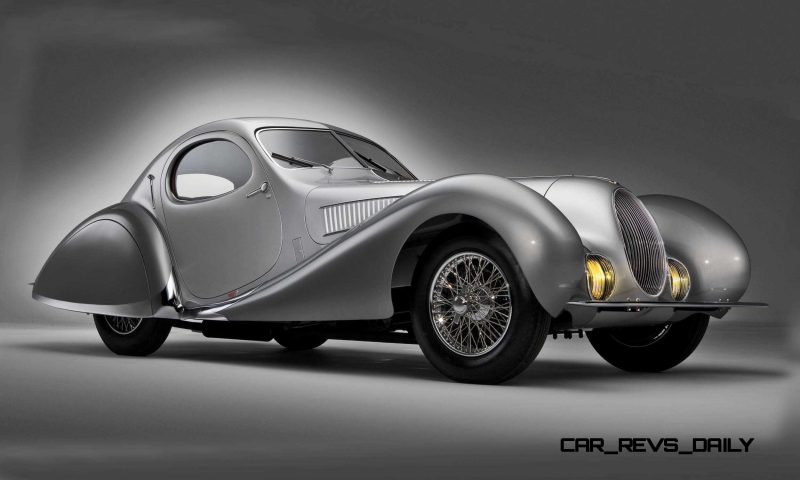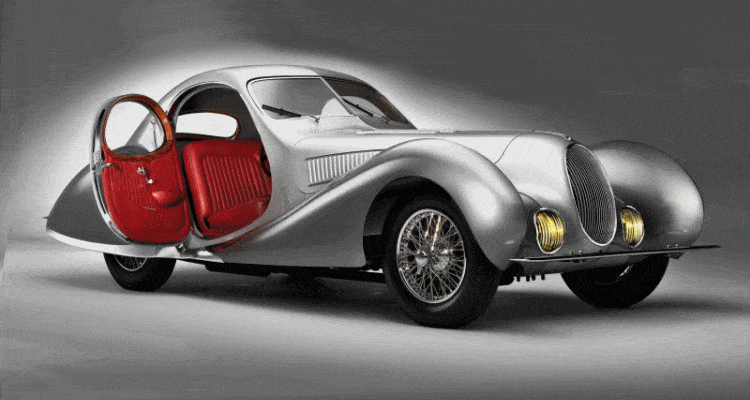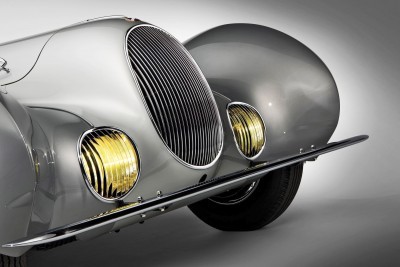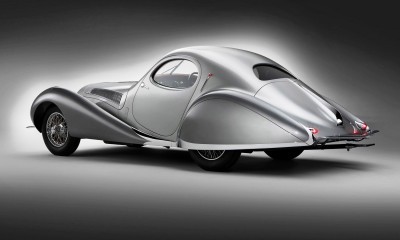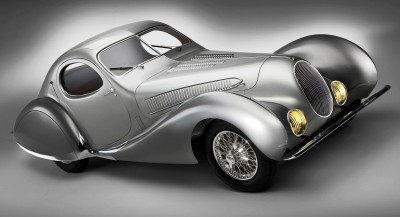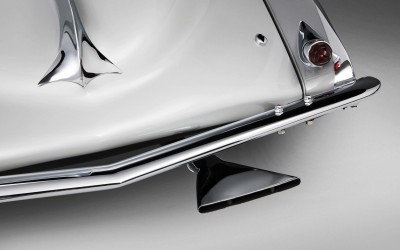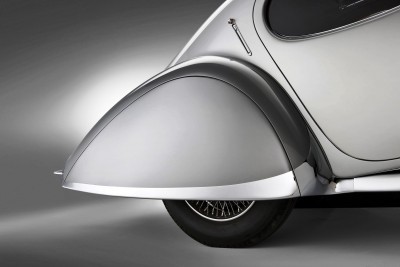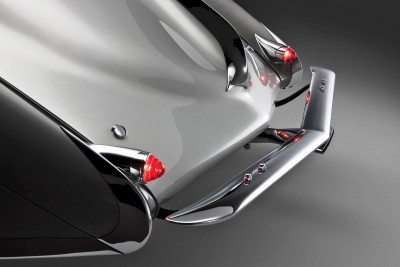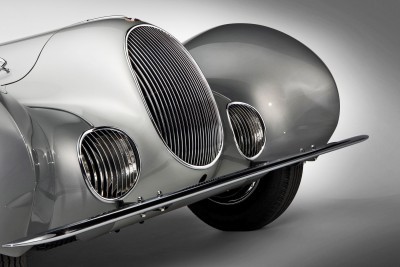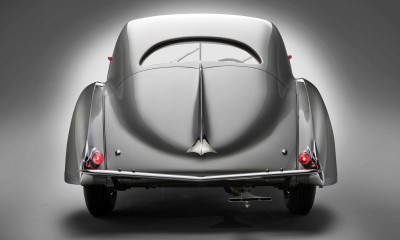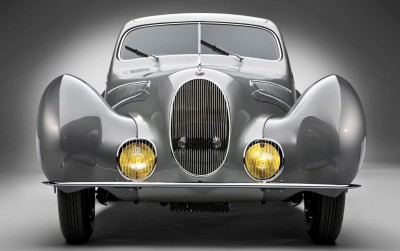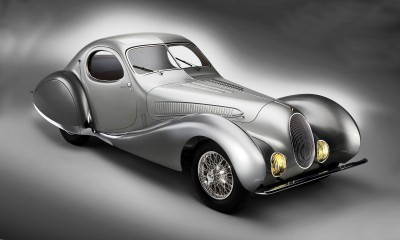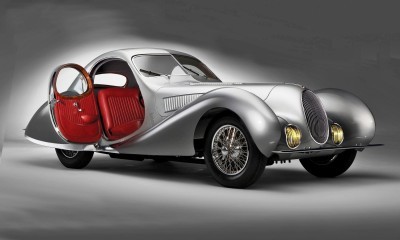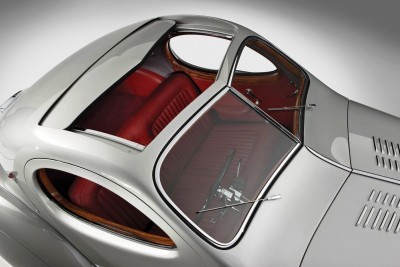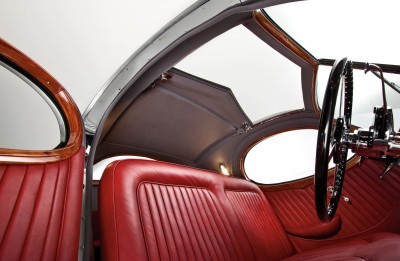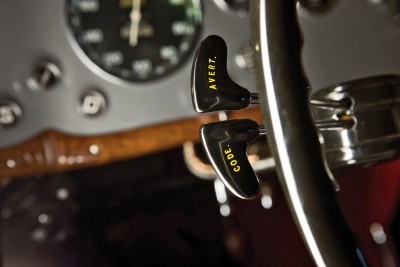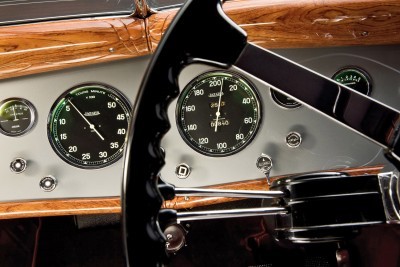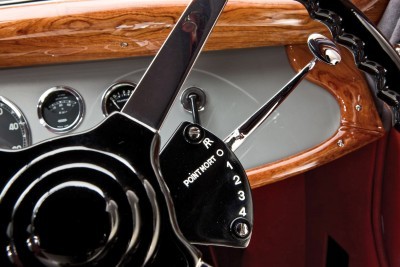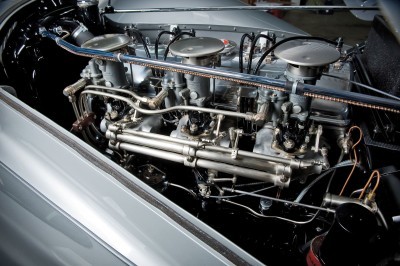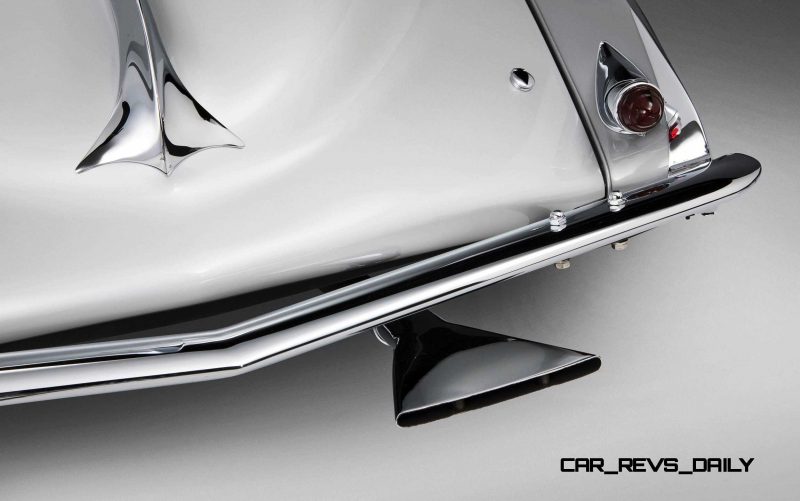 Most people will instantly think of the Bugatti Type 57 Atlantique or (Aerolithe) when asked about a gorgeous, art-deck teardrop coupe.
Most people will instantly think of the Bugatti Type 57 Atlantique or (Aerolithe) when asked about a gorgeous, art-deck teardrop coupe.
But this Talbot-Lago is arguably far more beautiful than even that legendary Bugatti. Named the T150 Competition SuperSport, the car is clearly more than a static showpiece. Eleven of this “New York” body were hand-made by legendary coachbuilders and designers Figoni and Falaschi.
So, is it the sexiest Teardrop Coupe ever made? We say yes.
Three key reasons for the Talbot-Lago’s lasting and sumptuous beauty topping the Bugatti:
— that last, artful bit of finesse in body shaping of the Talbot-Lago’s pontoon fenders seals the deal overall. The T150-C’s fenders are taller, fuller and fully rounded under the body at the sills, while the Bugatti panels by comparison appear machine-stamped. 
 1935 Bugatti 57S Competition Coupe Aerolithe
1935 Bugatti 57S Competition Coupe Aerolithe
— the nose detailing of the Talbot-Lago from dead-front is far more elegant. A tall oval grille with a chrome waterfall is a stunning look. The deep vertical slats of the twin, embedded round headlamps match the grille and slice the air nicely. They also disappear behind a chrome visage when viewed from the front three-quarter angle



— finally, the upper body and tail are far more lovingly shaped than the Bugatti. This is evident in the slight crease of the top of the arrow-shaped windshield,
and flat press of the bumper as the roofline races downward, and of course, the elegant wide-pipe of the exhaust.
This exceptional car sold in 2011 for $3.5-million.
1938 Talbot-Lago T150-C SuperSport Teardrop Coupe
1938 Talbot-Lago T150-C SS Teardrop Coupé by Figoni et Falaschi
RM Auctions
Lot 127
1938 Talbot-Lago T150-C SS Teardrop Coupé by Figoni et Falaschi
To be auctioned on Saturday, May 21, 2011
Sold for €3.136.000
- Chassis no. 90112
140 bhp, 3,996 cc inline six-cylinder engine with hemispherical combustion chambers and triple Stromberg carburettors, Wilson four-speed pre-selector gearbox, independent front suspension with transverse leaf spring, leaf spring and live axle rear suspension, and four-wheel drum brakes. Wheelbase: 2,650 mm (104.33″)
– A triple award winner at Pebble Beach in 2009 and Best of Show at Meadow Brook in 2010
– Shown at concours events in period
– Show-quality restoration by RM Auto Restoration
– One of only 11 examples with Second-Series “New York” Figoni coachwork
– Rare Factory sunroof
– Sophisticated race-bred, short-wheelbase T150-C SS Talbot-Lago chassis
The T150-C SS chassis is arguably one of Anthony Lago’s greatest achievements. The “C” stood for competition, a reference to the marque’s racing success, while “SS” signified “super sports,” the short 2.65-metre wheelbase version of the competition chassis. Its race-bred six-cylinder engine featured an overhead valvetrain, hemispherical combustion chambers, high compression, triple carburettors and a large-capacity oil pan. Other competition items included a punched handbrake lever and a dual braking system. Intended for sporting two- or three-place coachwork, it was also the lightest chassis and offered exceptional road holding by virtue of its advanced independent front suspension, plus excellent braking.
Racing success certainly enhanced the appeal; it was this demand, combined with Lago’s collaboration with the Figoni et Falaschi coachbuilding firm, that resulted in the creation of what many believe to be the most beautiful automobiles ever conceived. 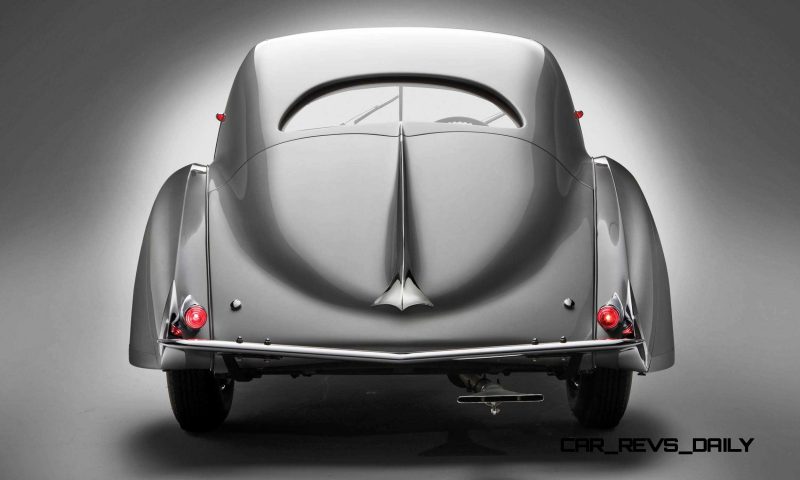
Figoni et Falaschi: Masters of Elegance
There is little doubt that the era of exuberant French coachwork precipitated a tidal change in automotive design. Gone were the largely functional forms of the 1920s and early 1930s, replaced by the fanciful curves and sensuous lines that ushered in the era of the automobile as art form. Although others were versed in the style to one degree or another, the Parisian firm of Figoni et Falaschi remains widely regarded as the truest innovator of the groundbreaking new look.
Joseph Figoni began to turn his attention to Talbot-Lago. In 1937, Figoni and Lago signed an agreement to work together exclusively, and for a time they did. The finest product of their collaboration was the landmark “Teardrop” or “goutte d’eau coupé,” with just 16 ultimately produced in two series. Regardless of the series, each Teardrop was coachbuilt, and consequently there are minor and even major variations from one car to another. For example, two were built with skirted front and rear wheels, some featured bullet headlamps between the radiator grille and fenders, while others featured headlamps recessed behind chrome grilles.
The first series, named “Jeancart” after the first patron of the design, was a lovely aerodynamic coupé with a slight notchback design. Five were built, with three on the T150-C SS chassis, one on the three-litre T23 chassis and one on the T150-C Lago Speciale long-wheelbase chassis.
The second series, débuted at the New York Auto Show and named “Model New York” in honour of the occasion, was quite similar in concept but featured an uninterrupted fastback profile. While not all such cars were officially designated “Model New York” by Figoni, all share the same appearance and characteristics, and consequently they are usually listed together by marque experts. 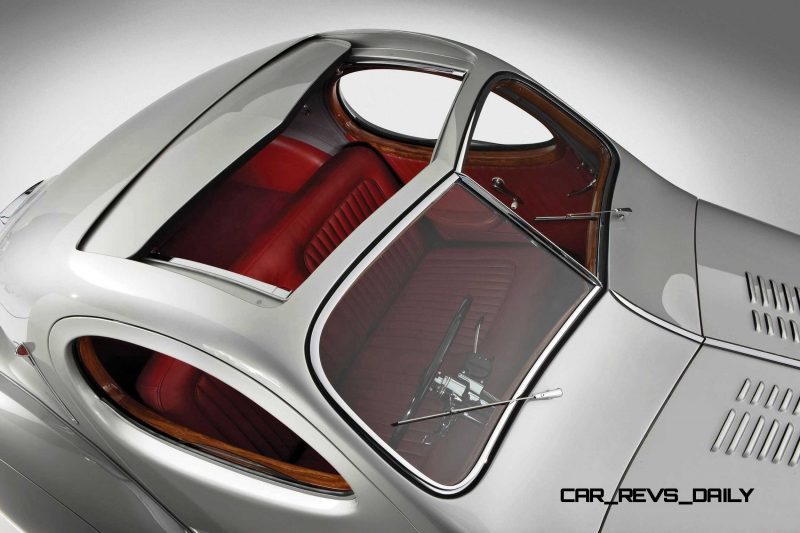
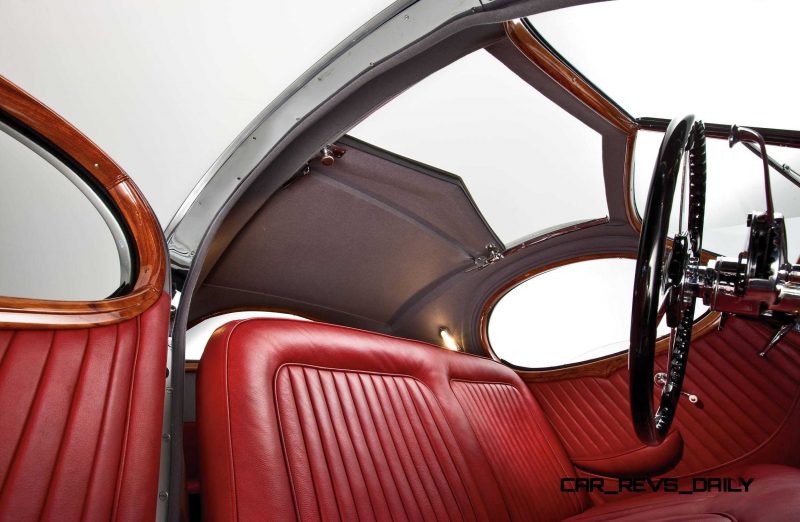
Chassis no. 90112: Speed and Beauty
Perfectly proportioned, these Teardrop Coupés mark the peak of the French streamlined design movement of the 1930s. Chassis 90112, the wonderful example offered here, is one of only 10 examples of the Style 9220 Model New York built on the short T150-C SS chassis (one additional car was built on the T23 Baby chassis). It is also one of just three surviving examples fitted from new with a factory-fitted sunroof. One of the most striking aspects of this design is the pair of graceful chrome grilles behind which the headlamps are hidden. A classic Figoni detail, it graces just a handful of the surviving cars.
Provenance
In the world of French cars, chassis 90112 stands as one of the best Teardrops, having a continuous history from new and no history of fire, accident or deterioration. All of its major components remain intact and together, including its chassis, engine and Figoni coachwork. It was ordered new by M. Troussaint, Director of the Casino at Namur, Belgium, and delivered to him in May 1938. Notably, it was shown at the 1939 Brussels Concours d’Elegance, and it was presented at the 1939 Concours d’Elegance in Deauville, France.
With the onset of war and the fall of Belgium in the face of the German Blitzkrieg in May 1940, 90112 disappeared from view but eventually resurfaced in storage during the 1950s, prior to its acquisition by the Belgian royal family. Following the death of the King, a family member, who kept the car at their villa in Belgium, apparently inherited it. At some point in time, 90112 had been partially disassembled, in preparation for restoration, but the work was never undertaken, making 90112 one of the most original unrestored examples of its kind when the present owners acquired it during the mid-2000s.
Restoration
RM Auto Restoration was tasked with returning 90112 to concours-quality condition. The project began with a thorough inventory and dismantling of the remarkably complete car. Most of the original wooden framework supporting the coachwork survived the intervening decades, and during the restoration, every joint was painstakingly dismantled, cleaned and refastened. Where wood rot had appeared, primarily in the lower portions of the doors, new pieces were fabricated in the exact manner of the originals and carefully installed. While the sheet-metal was complete, previous repairs were poor. Although much of the original sheet-metal was saved, some metalwork was required, with identical materials and workmanship used to ensure the faithful restoration of the coachwork.
The frame remained excellent, requiring little more than a thorough cleaning and refinishing. Similarly, the original chassis components were rebuilt and reinstalled, and every drivetrain component was rebuilt and cosmetically refurbished. Extensive research ensured that each detail was faithful to the original materials and finishes. To this end, several separate trips to visit other cars were made in order to photograph and document original features for authenticity.
The interior trim and upholstery are identical in form and pattern to the originals. The wooden trim was carefully repaired and properly refinished, and the carpet, headliner and upholstery were painstakingly cut and fitted to match the original patterns. Each instrument was restored, and a new electrical wiring harness was fabricated for the complete car. Each light, bezel and lens were carefully rebuilt and reinstalled. Hundreds of hours were dedicated to careful block sanding and preparation for painting. The finish is a correct shade of silver accented with a subtle grey two-tone.
In testament to the authenticity and quality of its restoration, 90112 earned no fewer than three awards at the 2009 Pebble Beach Concours d’Elegance, including the J.B. and Dorothy Nethercutt Most Elegant Closed Car Trophy, First in Class J-2: European Classic Closed and the Art Center College of Design Award. In 2010, 90112 continued its winning ways by earning the Breitling Watch Award for the Car of Timeless Beauty at Amelia Island in March, followed by Best in Class: European and Best of Show at the Meadow Brook Concours d’Elegance in July.
Any surviving Talbot-Lago is a rare and delightful thing, particularly when it has been restored to such a high level. 90112 is exceptionally rare and attractive and is sure to garner invitations to the world’s most exclusive concours events, where its combination of performance and breath-taking “teardrop” coachwork is sure to impress.

Tom Burkart is the founder and managing editor of Car-Revs-Daily.com, an innovative and rapidly-expanding automotive news magazine.
He holds a Journalism JBA degree from the University of Wisconsin – Madison. Tom currently resides in Charleston, South Carolina with his two amazing dogs, Drake and Tank.
Mr. Burkart is available for all questions and concerns by email Tom(at)car-revs-daily.com.

